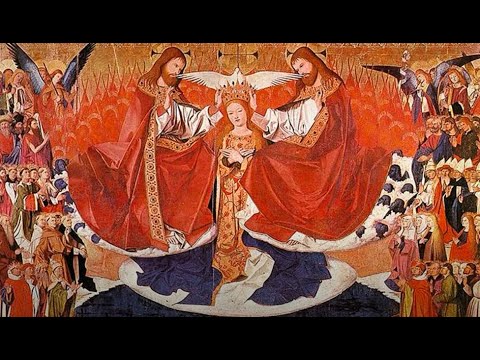Mead, Honeymoons, Sacrificing Virgins, and Sheeple? What is the Relation?
Mead, Honeymoons, Sacrificing Virgins, and Sheeple? What is the Relation?
original posting aug, 7, 2013
Here is an video I did a while back about the most famous but un recognize potent potable elixir known to man. It’s origins are so ancient that they are lost in history. I am talking about MEAD.
The most common knowledge of mead may be from a visit to a Medieval Day festivals, the drink of choice for the historical enthusiast. Or by a homebrewer or wine maker acquaintance.
You will learn something new that even Wikipedia does not know about. The true origin of the term of Honeymoon.
No one has taken the sociological and philosophical approach to this epic historical phenomena.
Of course with the demented visions of dr Meno*, he talks about how the human superstitions of cultural prosperity, contributed to the survival of tribes and their customs. Through the explanation of the relationship between,
Mead, The Honeymoon, The Sacrificing of Virgins, and the Sheeple.
Here are 2 excerpts from, “The Complete Joy of Homebrewing”, by Charlie Papazian, 3rd ed., Harper/Collins, 2003.
MEAD
Page 332-333
‘Mead-the mere mention of the word conjures visions of drinking vessels swaying high in the air. It is the nectar of nectars and one of the most natural drinks ever made by man.
Predating all other forms of concentrated sugars, honey, diluted to honey water, was in all probability one of the first fermented beverages ever concocted by man. With its fermentation came the alcoholic drink we know as MEAD.
The ancient Greeks, Romans, Egyptians, Scandinavians and Assyrians procured this legendary drink as a vehicle for saturnalian revelry unmatched today. The Inca and Aztec Indians also brewed mead and held it in reverence.
Imbued with legendary intoxicating and aphrodisiacal qualities, mead heralded in and out many a fascinating orgy. Tales, stories and lies abound of the joy, happiness and tragedy mead has brought to its imbibers. Presently, most modern-day social gatherings are simply not of the unbounded caliber they once were. As for mead’s aphrodisiacal character-well, the earth rotates more slowly and perhaps we know a bit too much…. You’ll never know until you check it out.
WHAT IS MEAD?
In essence, mead is defined as yeast-fermented honey water. Now if one should do an imaginative thing such as add fruit to the honey water, the resulting fermentation is technically called a melomel. With the addition of grapes, you have a melomel called pyment. Becoming intrigued? Well, hold on, there’s more. Mead infused with herbs and/or spices is called a methelin. Honey and apple juice combine to ferment and make cyser. Finally, a spiced pyment (melomel) is called hippocras. ‘
Mead, Honeymoons and Love
page 336
‘Who would have thought that the bees, the moon and the magical brews of man could combine to add to the bliss, luster and memories of weddings. Mead is a beverage of love. The drinking of Mead has has held responsible for fertility and the birth of sons. This is where the tradition of that honeymoon got it’s start. If mead were consumed for one month (one moon) after a wedding, then in nine months a son would be born and the mead maker congratulated. The custom of drinking mead at weddings and for one month after initiated our present-day custom of the honeymoon. Interestingly, mead drinking developed quite a reputation for its ability to increase the chances of bearing sons, so much that a special drinking cup, called the Mazer Cup, ( see photos below),was handed down from generation to generation. The couple that drank from the cup would bear sons to carryon the family name and increase the male birth rate, important in the days of constant war.
Fact or Folly?
Scientists have been doing animal experiments and have found they can increase the chances of bearing males the altering the body’s pH. It is known that the acidity or alkalinity of the female body during conception can influence the sex of the newborn. Blood sugar levels do alter pH.
Mead is indeed a noble drink. For more than 5,000 years, Virgil, Plato, Plutarch, Zeus, Venus, Jupiter, Odysseus, Circe, the Argonaut, Boewulf, Aphrodite, Bacchus, Odin, Valhalla, The Sanskrit, Thor, King Arthur, Queen Elizabeth I, the French, Greeks, Mayans, Africans, English, Irish, Poles, Hungarians, ‘Germans, and present day homebrewers and even the Australian Aborigines all likened part of their enjoyment or life to mead.
Centuries ago the making of mead as art, as regulated by custom and statutes. The brewing of mead was not done by just anyone. Certain individuals were trained and held in the highest esteem for turning honey into the magic of Mead.
Today every homebrewer has the know-how to become a dignitary and the maker or mead for special occasions or for any occasion. The stronger versions keep for years, as does good marriage . And as for having sons, you will have to experiment on your own.’
Something worth mentioning. In Plato’s Symposium, Mead was the drink passed around the table at these famous Greek Symposiums. Symposium literally means, “Drinking Party”
http://en.wikipedia.org/wiki/Symposium_%28Plato%29
http://en.wikipedia.org/wiki/Charlie_Papazian
http://en.wikipedia.org/wiki/Human_sacrifice
http://en.wikipedia.org/wiki/Sheeple
http://en.wikipedia.org/wiki/Mead
http://en.wikipedia.org/wiki/Honeymoon
www.mazercup.com
* dr Meno is a Certified Homebrewing Competition Judge. Multiple ribbon award winner of meads in competitions. The highest was a Best of Division at the Los Angeles County Fair, for a pomegranate Mead. Other famous meads from dr Meno were a Margarita mead, Cherry Mead, and a Mango Mead.
The day after I submitted this article, I came across this study.
Sacrificed Inca children found to be drugged heavily before death
By the University of Copenhagen news service
Scientists from the Department of Forensic Medicine at the University of Copenhagen have examined the bodies of three 500-year-old Inca children. This has given new, detailed knowledge about the old Inca ritual capacocha which also involved sacrificing humans. The results were published recently in the journal PNAS.
One of the examined mummies is the 13-year-old girl, The Llullaillaco Maiden, named after the 6,379 meters tall volcanic mountain, Llullaillaco, where she was found frozen close to the mountain’s top. The two other bodies are a boy and a girl around 4 or 5 years old found in separate graves near The Maiden. The mummified bodies are all remarkably well-preserved and have been frozen for nearly 500 years near the top of the mountain, which is found on the border between Chile and Argentina.
“Now we know more precisely what happened in an Inca sacrifice, for example to what extent coca and alcohol were used as part of the Inca ritual in the months and weeks preceding a sacrifice. It is very satisfactory that we with our scientific methods can help uncover the unique circumstances regarding a number of very central aspects of ancient Inca culture,” said Niels Lynnerup from The Department of Forensic Medicine, who, along with doctoral student Chiara Villa, has analyzed a number of CT scans of the mummies.
What was known so far about the religious capacocha ritual from the Inca Empire was derived from written sources from the Spanish colonial power in South America. The new analysis of the frozen bodies give new knowledge about the practice of the rituals, for example the child sacrifices.
The analysis show that the three mummified children had all ingested both coca and alcohol prior to their death. The girl, The Maiden, was even found with chewed coca leaves in her mouth, and the analyzes show that her consumption of coca increased sharply 12 months before her death, and then peaked six months later. The analyzes also show that her alcohol consumption peaked during the last few weeks before her death.









![COVIDIOT SHEEPLE KEEP WAITING IN LINE TO GET A DEPOPULATION JAB, WHILE A FELLOW SHEEPLE IS CARRIED AWAY BY AMBULANCE [2021-07-04] (VIDEO)](https://video.ugetube.com/upload/photos/2021/07/dtmRgQww8c3rnrFrD5MS_04_22a4c100170261fd7d05e6075732c22f_image.jpg)














